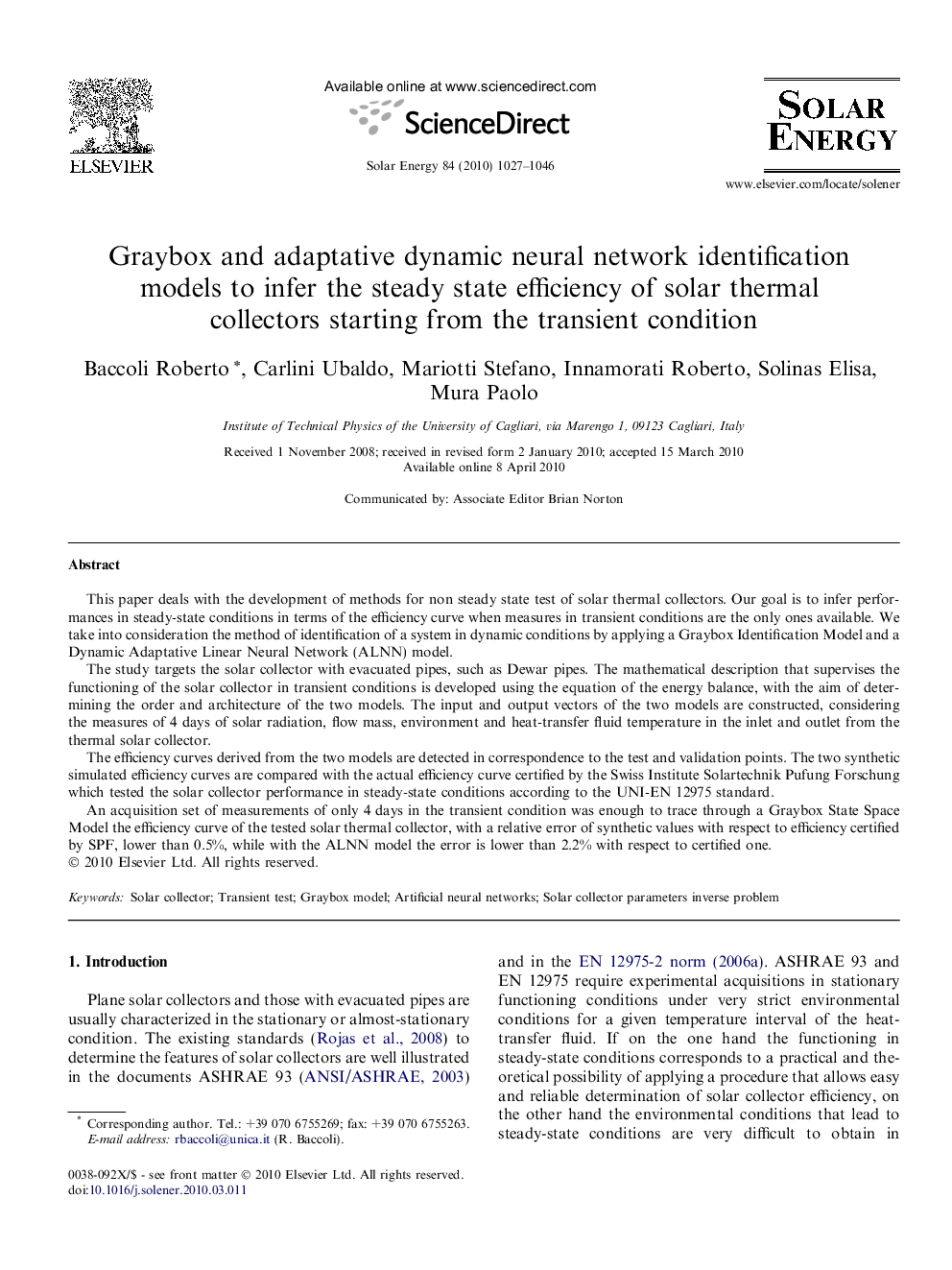| Article ID | Journal | Published Year | Pages | File Type |
|---|---|---|---|---|
| 1551666 | Solar Energy | 2010 | 20 Pages |
This paper deals with the development of methods for non steady state test of solar thermal collectors. Our goal is to infer performances in steady-state conditions in terms of the efficiency curve when measures in transient conditions are the only ones available. We take into consideration the method of identification of a system in dynamic conditions by applying a Graybox Identification Model and a Dynamic Adaptative Linear Neural Network (ALNN) model.The study targets the solar collector with evacuated pipes, such as Dewar pipes. The mathematical description that supervises the functioning of the solar collector in transient conditions is developed using the equation of the energy balance, with the aim of determining the order and architecture of the two models. The input and output vectors of the two models are constructed, considering the measures of 4 days of solar radiation, flow mass, environment and heat-transfer fluid temperature in the inlet and outlet from the thermal solar collector.The efficiency curves derived from the two models are detected in correspondence to the test and validation points. The two synthetic simulated efficiency curves are compared with the actual efficiency curve certified by the Swiss Institute Solartechnik Pufung Forschung which tested the solar collector performance in steady-state conditions according to the UNI-EN 12975 standard.An acquisition set of measurements of only 4 days in the transient condition was enough to trace through a Graybox State Space Model the efficiency curve of the tested solar thermal collector, with a relative error of synthetic values with respect to efficiency certified by SPF, lower than 0.5%, while with the ALNN model the error is lower than 2.2% with respect to certified one.
